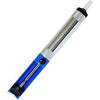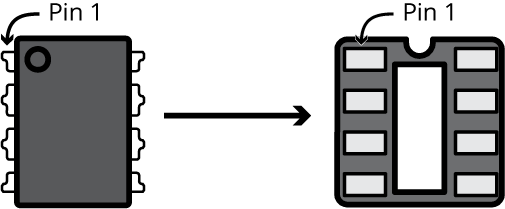15IPS Assembly Guide
Damaged or Missing Parts All kits and parts are checked before being shipped to you. If something arrives damaged or if your kit is missing a part, please open a support ticket to inquire about a replacement. Missing parts will be replaced at our expense. Damaged parts should be returned for verification. If the part shows signs of use beyond what was necessary to determine that it was damaged, DIY Recording Equipment, LLC reserves the right not to replace the part.
Thank you for purchasing a !
If this is your first DIY project ever, we recommend reading our Getting Started Guide.
Required Tools
You'll need the tools below to complete this build.

Soldering Iron
We recommend an adjustable-temperature station, such as the $40 Weller WLC100.

Solder
You can use 60/40 "leaded" solder or lead-free. We recommend 60/40 because it flows better and is easier for beginners to use.

Wire Cutters
You'll need a pair of good "snips" for cutting of the excess leads after soldering.
Optional Tools
These tools aren't strictly necessary but can make your build a bit easier.

Multi-Meter
If you find the color bands on resistors a bit hard to read, you can use a meter to sort them with absolute confidence.

Desoldering Pump
If you accidentally solder something in the wrong place, a desoldering pump can save the day.
0. Resistor Calculator
Type in the value of the resistor you need and this tool will show you the corresponding color code.
Check Revision
This assembly guide is for mkI of the 15IPS, which was discontinued in 2019. If you bought your kit after 2019, go to the new 15IPS assembly guide.
Place Connectors
Identify and Sort Components
Before you begin stuffing the board, it's a good idea to sort the components using the 15IPS Component Sorting Sheet (PDF).

Install Standoffs and Connector
Begin by snapping in the white nylon standoffs. Look closely at which side you are inserting. You should feel it snap in by inserting the flat side of the standoff into the Colour PCB. The other side is more rounded, which will make it easier to remove the Colour from the pallet. In order to keep the connector in place and level, snap in the stand offs before soldering.

Solder Connector
Place Resistors

Install Resistors and Bend Leads

Solder and Trim Resistor
Place Remaining Components

Diodes and IC Socket
Repeat the same process for the diodes. Unlike resistors, however, diodes must be installed with a certain orientation. Make sure to match the lines on the diodes with those on the PCB legend. Once all the diode leads are bent and held into place, insert the 8-pin IC socket into position, making sure to align the notch in the plastic with the notch on the PCB. Then flip the PCB over while holding the socket in place and solder the socket’s pins. If needed, use a small piece of tape to hold in place before flipping over. Trim the leads of the diodes.
Note: Because some batches of the 1N34A diodes are especially fragile, your kit may contain two extras. We threw these in just in case one breaks or arrives damaged.

Capacitors

Insert IC
Final Checks
Before you wrap up, check the following things:
-
IC orientation: Does the dot/notch on the IC align with the notches on the socket and PCB?
-
Diode orientation: Do the stripes on the diode match those on the PCB?
-
Resistors: Do all of the resistor positions correspond the chart and/or sorting sheet?
-
Soldering: Is every solder joint shiny and clean? If one is cloudy or misshapen, try reheating it for 8 seconds and adding a tiny bit more solder.
-
Trimming: Are all of the excess leads trimmed down as close to the joint as possible?
All good? Congrats on finishing your build! Have a question or problem? Drop us a line.
Help Us Improve
1
2
3
4
5
6
7
8
9
10



